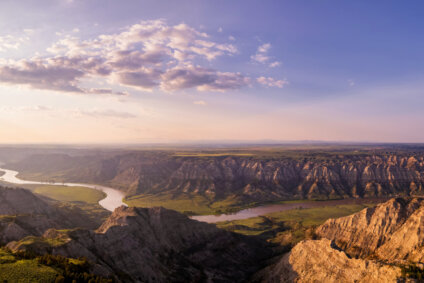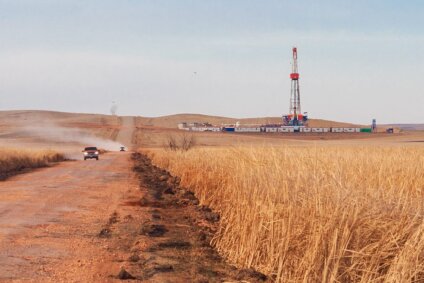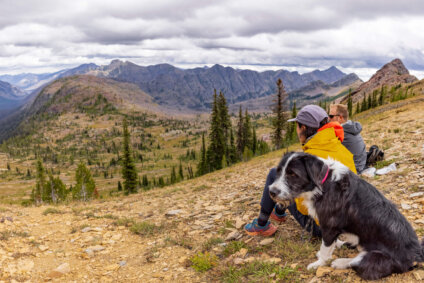Restoring Lee’s Legacy in the Bitterroot
Bitterroot National Forest has written a travel plan worthy of the area's favorite son
On April 8, after eight years of public input and intense deliberation, the Bitterroot National Forest (BNF) released a draft Record of Decision for its Travel Management Planning Project, which guides motorized and non-motorized recreation on the Forest’s 1.6 million acres, an area larger than the state of Delaware.
The draft decision offers bold conservation measures that live up to what Bitterroot Valley-native, Senator Lee Metcalf, envisioned for the Bitterroot, and provides an inspired framework for avoiding recreational conflict and costly legal battles – a framework that could very well serve as a model for other forests across the country.
Make sure the BNF hears that you support its draft decision by emailing Forest Supervisor, Julie King, and thanking her. You can email her at jkking@fs.fed.us.
The BNF encompasses most of the headwaters of the Bitterroot River, one of the West’s greatest trout streams, and surrounds historic communities in the Bitterroot Valley. Crowning the forest on its western border are the towering granite peaks and glacier-carved canyons of the Bitterroots, the longest mountain chain in the Rockies. The Anaconda Range and the Continental Divide line the Forest’s southern border, while the vast wildlands of the Sapphire Mountains rise along its eastern edge. Running through the middle of it all is the braided, gin-clear Bitterroot River.
This iconic forest has long been a major destination for hiking, skiing, horse packing, hunting, and angling. Indeed, these traditions were so important to Bitterroot locals that they effectively lobbied for the creation of two wilderness areas through passage of the original 1964 Wilderness Act. The Selway-Bitterroot and the Anaconda-Pintler Wilderness Areas, both of which extend beyond the borders of the Forest, anchor the BNF’s wild heritage.
But unfinished business and broken promises have kept the BNF from fulfilling its potential as one of the great wild places in the Lower 48, a potential that Sen. Metcalf saw in 1977 when he worked to enact the Montana Wilderness Study Act, one of his last legislative achievements. That bill created nine U.S. Forest Service Wilderness Study Areas (WSA) across Montana, two of which lie within the BNF. The Blue Joint WSA falls entirely within the boundaries of the BNF and the Sapphires WSA lies partially within the Forest.
The Montana Wilderness Study Act requires the U.S. Forest Service to manage these areas “to maintain their presently existing wilderness character and potential for inclusion in the National Wilderness Preservation System.”
With passage of the Montana Wilderness Study Act, the Forest Service was entrusted to maintain wilderness character as it existed in 1977. But in the 1990s, BNF officials authorized projects to turn quiet trails and old fire lines in the Sapphires WSA into loop roads for off-highway vehicles, diminishing the area’s historic wild character. The failure of the U.S. Forest Service to follow the law not only damaged wilderness, but also pitted community members against one another on other National Forests in Montana, including the Gallatin, Kootenai, and Lewis and Clark. It also led to years of costly and time-consuming legal battles.
With the release of its draft decision, the BNF is poised to right past wrongs and restore balanced recreation management. More importantly, the Forest’s draft travel planning decision would also protect what’s best about Montana by:
- Guaranteeing world-class wildlife habitat and restoring historic quiet recreation in the Sapphires and Blue Joint WSAs by eliminating motorized and mechanized use within these areas.
- Maintaining the potential for wilderness quality lands to be included in the Selway-Bitterroot and Frank Church-River of No Return Wilderness areas.
- Protecting backcountry hunting, fishing, and quiet enjoyment of the Sapphire Mountains by removing motorized use from the wild Stony Mountain Roadless Area
Even with these changes, the BNF would still keep a huge swath of the forest open to motorized recreation, including:
- 2,300 miles of roads and trails open to ATVs, motorcycles, and mountain bikes, nearly the driving distance between Hamilton and New York City
- 565,000 acres (or one-third of the forest) open to snowmobiles
Bitterroot Forest Supervisor Julie King and her staff have written a smart plan that provides recreational access for all, ensures productive habitat, and, perhaps most importantly, bridges our communities. It’s a plan that would make Lee proud.
Again, please thank Forest Supervisor, Julie King, by emailing her today at jkking@fs.fed.us.
– Zack Porter is the western Montana field director at the Montana Wilderness Association.
Stay Connected
"(Required)" indicates required fields


